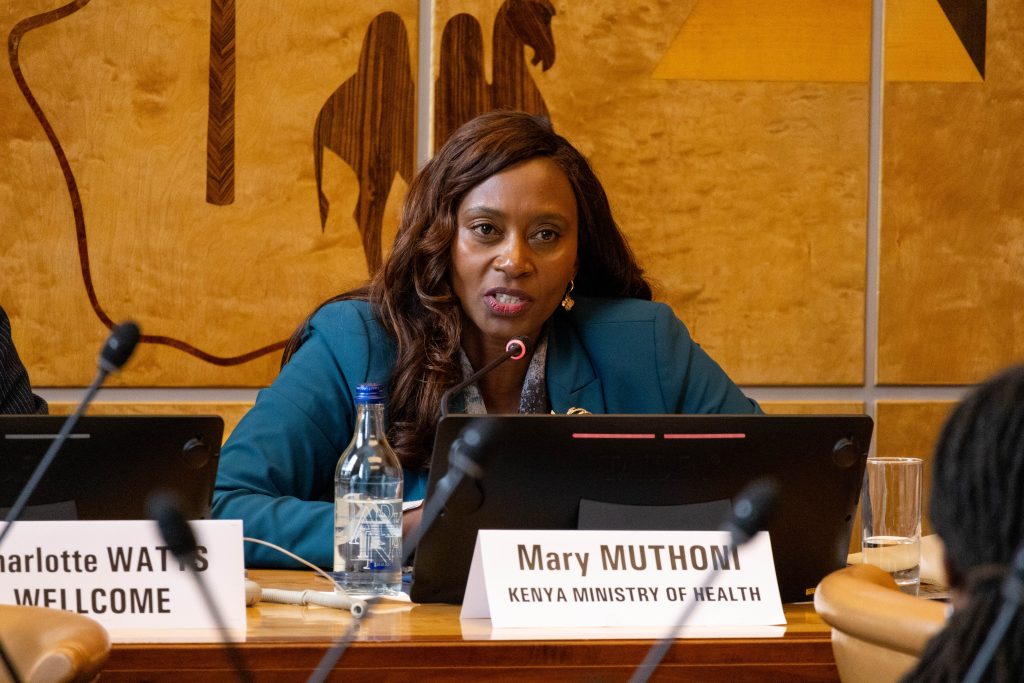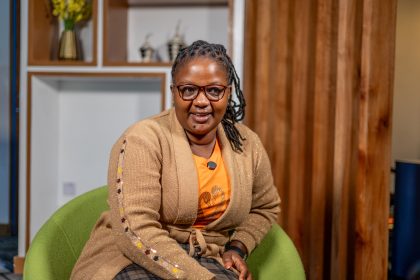‘A fund for women’s health innovation—backing research and tools designed by and for women—is non-negotiable’– Public Health PS, Mary Muthoni.
Despite making up half the world’s population, women’s health receives minimal investment—only four per cent of biopharmaceutical Research and Development targets female-specific conditions, and just two per cent focuses on non-cancer areas. These stark figures drove a compelling discussion at the 78th World Health Assembly in Geneva, Switzerland, where leaders demanded urgent action to close this long-standing gap in women’s healthcare.

Anchored by a new white paper from the World Economic Forum’s Global Alliance for Women’s Health, the session highlighted three urgent priorities: funding, inclusive research, and delivery systems. Policymakers, scientists, and industry leaders united behind one goal: building a global ecosystem that drives innovation for and with women.
“We’re sitting in 2025, and these statistics are unacceptable,” said Dr Sanjana Bhardwaj of the Gates Foundation. “Women’s health isn’t a niche issue—it’s half the world’s population.”
The white paper reveals stark gaps: gender bias in medical research, chronic underfunding, and a disconnect between innovation and delivery. Yet the panel insisted progress is possible—with bold, coordinated action.
Kenya’s Principal Secretary for Public Health, Mary Muthoni, stressed the need for a dedicated global fund. While Kenya’s new Social Health Authority (SHA) advances universal coverage, disparities persist. Maternal mortality remains high in counties like Mandera and Wajir, and many clinics lack basic tools for cervical cancer screening or antenatal care.

Still, grassroots innovation is thriving. AI-powered maternal health pilots in Kisumu and Makueni are detecting complications early, while local startups develop low-cost diagnostics. “A fund for women’s health innovation—backing research and tools designed by and forwomen—is non-negotiable,” Muthoni said, urging global partners to ensure innovations reach local communities.
Dr Bhardwaj underscored the moral and economic imperative of investing in women’s health: “Every $1 invested yields $3 in returns.”TheChief Scientific Adviser at Wellcome, Charlotte Watts, noted that transformative leaps, like the contraceptive pill, often start with philanthropy, not governments. “Today, we need the same vision to scale AI ultrasounds and next-generation contraceptives.”
Historically, clinical trials remain exclusionary, sidelining pregnant, breastfeeding, and postmenopausal women.
Christine Mayer-Nicolai of the Merck Foundation warned: “Dosage and efficacy can’t be extrapolated from male-dominated trials.” Updated guidelines and AI-driven designs are critical.
Dr Melanie Saville of PATH challenged scientific publishers: “Journals should refuse to publish studies that do not provide sex-disaggregated data. We owe women transparency, and science owes them relevance.”
The panel emphasised that innovation is meaningless without reaching its intended communities. Promising examples included Kenya’s AI-supported maternal health pilots and South Africa’s midwife-led obstetric units.
Dr Jabulile Makhanya of South Africa highlighted integrating innovations into public health systems: “Cervical cancer can be eliminated through single-dose HPV vaccines, but only if we integrate this into primary care systems.”
The panel’s central recommendation was establishing a Global Women’s Health Innovation Fund—a dedicated financing mechanism for transformative research and solutions designed by and for women. The fund would combine multilateral donors, government contributions, and private investments, targeting historically neglected areas like maternal health technologies, sex-specific therapeutics, and low-cost diagnostics.
Leaders argued that financial neglect of women’s health has slowed medical progress and undermined global development. Investing in women’s health is both a moral obligation and economic necessity. Research shows every $1 invested in women’s health yields $3 in economic returns. The proposed fund aims to unlock innovation by directing resources where need and opportunity are grea






















